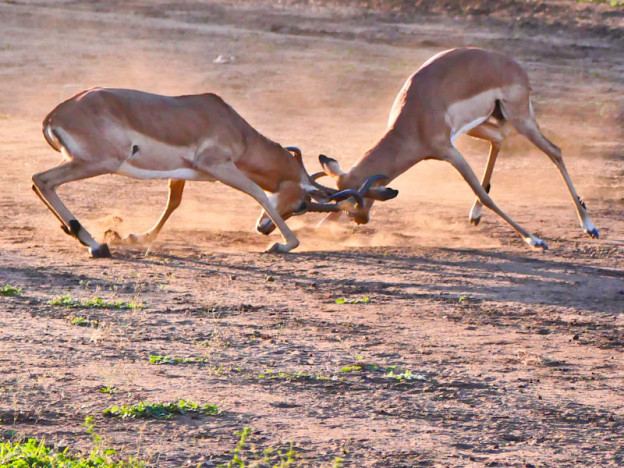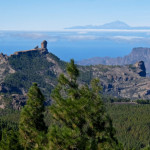Rupert Parker Goes On Safari In the Majete Wildlife Reserve in Malawi, The Warm Heart Of Africa.
I’m wakened from my afternoon siesta by the sound of elephants trumpeting. Outside my door, in the trees just in front of me, two young bucks are going head-to-head in what looks like friendly joshing. They’re just a few metres away and I worry that they might see me, but they carry on oblivious. After a few minutes one slinks away into the bush, but the other stays in the camp. It’s dangerous to go out so I sink back into my bed and continue my slumber.
I’m in Malawi, a landlocked country in southeast Africa that is bordered by Mozambique to the east, Tanzania to the north, Zambia to the west, and Lake Malawi to the south. Named Lake Nyasa by David Livingstone, he was the first European explorer to map its shores. His legacy lives on as Blantyre, Malawi’s commercial capital, is named after the town of his birth in Scotland.
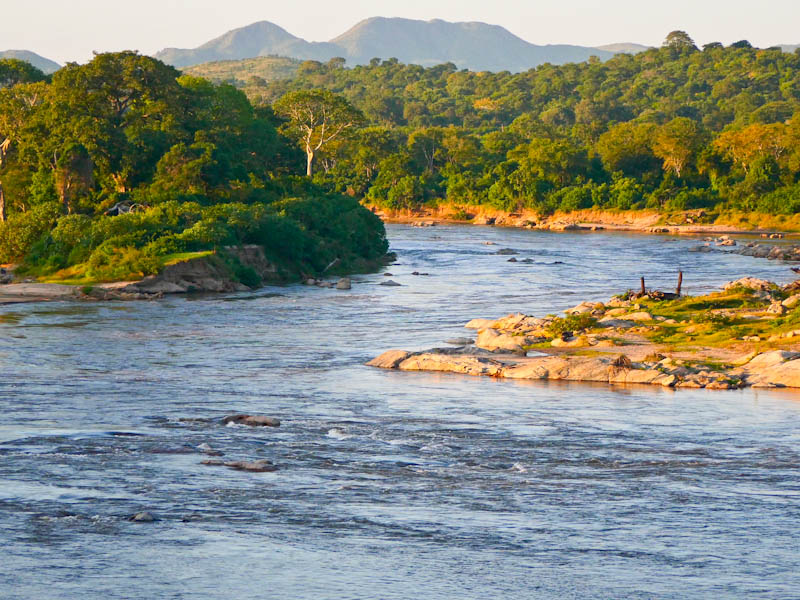
It’s a small country with a population of just over 18 million people, but it is home to a diverse range of landscapes and wildlife. It’s also a relatively affordable country with accommodation, food, and activities relatively cheap. In particular, safaris are relatively good value compared with similar camps in nearby African countries. The dry season is the best time
I arrive in Lilongwe, the capital, a low-rise sprawling city with a population of over a million people. It’s worth spending a night or two here, if only just to relax after the long flight, but I’m soon on the plane to Blantyre in the south. It’s the dry season, the best time to visit, which runs from April to October. That means the two-hour, journey to Majete Wildlife Reserve which includes dirt roads, is relatively painless. Also the vegetation is less dense, making it easier to spot animals.
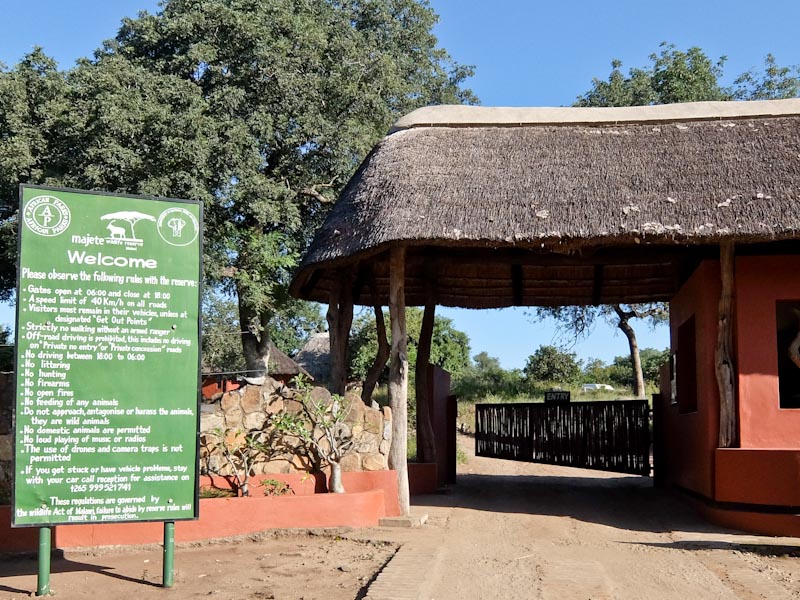
From the entrance to the Majete Wildlife Reserve, it’s only fifteen minutes to Thawale Camp, one of only three lodges here. It’s set on the edge of a pristine waterhole that regularly attracts a wide variety of wildlife, including a family of elephants that must be the ones that have woken me.
There are only six tented chalets, each with its own private veranda, plus a family chalet with two en-suite rooms, a kitchen and small living area. The lodge is completely unfenced to give guests a unique experience in the natural surroundings. As I sit and enjoy my welcome drink in the thatched lounge by the waterhole, impala males are engaging in mock fights right in front of me. It’s the mating season and there’s vigorous competition for the females.


Majete Wildlife Reserve is a remarkable success story as in the early 2000’s the reserve was brink of extinction. It had been drained of wildlife because of decades of rampant poaching, particularly as a consequence of the civil war in nearby Mozambique. Only a handful of antelope were left, the staff were down to twelve and there were no tourists.
In 2003 the Malawian Government partnered with African Parks with a joint vision of transforming an empty forest into a thriving eco-system. This program included the reintroduction of animals, as well as the removal of invasive species and the improvement of the park’s infrastructure.
To date, 3,200 animals from 16 different species have been reintroduced including the big five – leopard, elephant, buffalo, black rhino and lion. Other mammals include eland, sable, waterbuck, nyala, hartebeest, impala, zebra, warthog, bush pig, giraffe and cheetah. Majete Wildlife Reserve is now home to over 12,000 animals, making it one of the most biodiverse reserves in Malawi.

The evening game drive is my first chance to see what they’ve achieved. Very soon we spot giraffes and a whole host of antelope – impala, waterbuck, nyala and kudu. We make our way down to the Shire River which forms the eastern boundary of Majete Wildlife Reserve. It’s a fast-flowing torrent, the only outlet of Lake Malawi flowing into the Zambezi in Mozambique. Crocs are lounging on its banks and, in the early evening, hippos are bathing in the centre of the river.
This is the place to stop for a sundowner, in my case a beer gazing across the river into Mozambique. We spot a herd of elephants on the other bank, a long way away. But on our way back we find one of the beast blocking our path. It paws at the ground, throwing up dust and trumpeting loudly. After all the excitement it exits the road and enters the bush, and we make our way back to the camp.
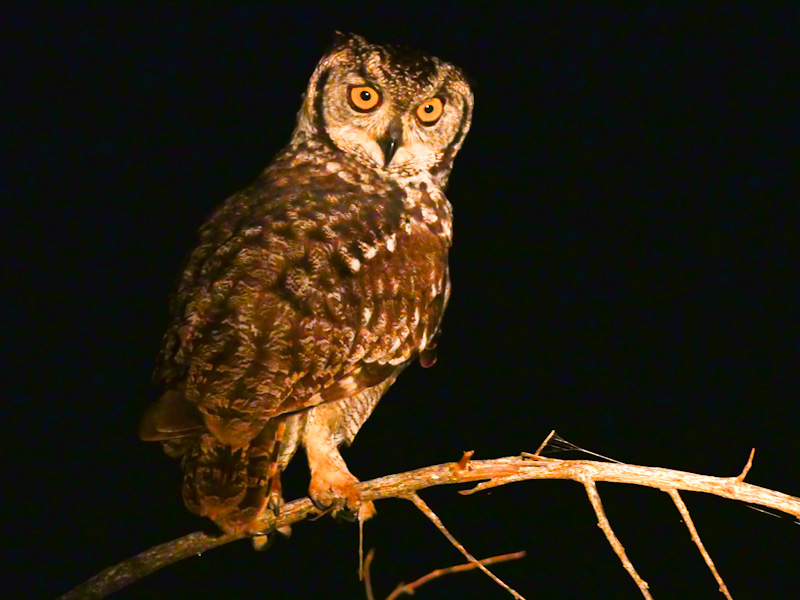
Meals are taken outdoors on long communal tables right next to the waterhole. There’s a relaxed atmosphere here and the meals are hearty rather than gourmet. At night there’s just the grunting of warthogs, drinking by the waterhole and the occasional hoot of owls. The obliging staff have lit a campfire for us to huddle around and compare our day’s experience.
Next morning we’re up at dawn for another game drive. The bird life is abundant but I’m looking for bigger stuff. There are more elephants crossing the road but as we make our way to the river, we can see things moving on the beach. Getting closer, it’s three lions patrolling the shores – a mother and her two cubs, both fairly good sized.

They seem to have just woken, their movements slow and deliberate, sitting and standing as they go. We watch them as move along the riverbanks, just passing the time, with hippos bathing in front of them. All too soon it’s time to go back for breakfast, but we’re happy we’ve had this wonderful sighting. Later those young elephants wander into the camp and disturb my siesta. It’s an added bonus of this unforgettable safari.
Tell Me More About This Insider Guide: Majete Wildlife Reserve, Malawi
Ethiopian Airlines flies from London via Addis Ababa to Lilongwe.
Visit Malawi has information about the country.
Thawale Camp costs from $210 per person per night including all meals and two activities. There’s also a Majete Wildlife Reserve fee of $30 per night.

